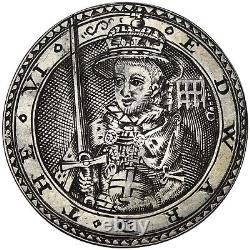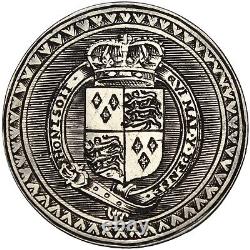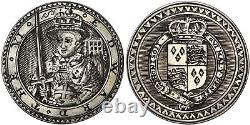GREAT BRITAIN Edward VI ca. 1720 silver Jeton / van der Passe school




Edward VI silver faux-engraved Jeton or Gaming Counter. Issued circa 1720, or slightly later. Series 5: Sovereigns of England: Half length (25mm, 2.11 g, 12h). By the school of Simon van der Passe. EDWARD THE VI, capped, crowned, and ermine-mantled bust facing slightly left, wearing ruffled collar and holding sword and orb; portcullis to right // Crowned coat-of-arms with Garter collar; all within elaborate border. Very lightly toned, with excellent intricate artistry. A fairly rare later type from a popular series.
Gambling and games of chance have served as a form of entertainment and excitement during much of recorded history in one way or another, and many of these games necessitate some form of accounting during play. In early modern Europe, jetons were commonly employed for these purposes and allowed for skilled engravers to promote their artistry.
One such engraver was Simon van der Passe, born in Utrecht circa 1585. This exemption allowed for the "graving and imprinting medailles" and small portraits of the king, and van der Passe utilized his technique for the production of numerous series of jetons or gaming counters, initially employing portraits of the Stuarts, James I and later Charles I with his wife, Henrietta Maria.
Though Simon would return to Holland in 1621/2, his London-based school continued under the management of his brother, William. Subsequent issues of these jetons would feature Gustav Adolph and his wife, Maria Eleonora, the sovereigns of England,'classical portraits' of historical and biblical figures,'street cries,' and the Commonwealth. Of even greater interest and debate among numismatists over the past century has been the method of manufacture of these jetons. Their appearance at first glance would lead one to believe that they have been individually engraved owing to their incuse design. It is thought that, in fact, these ornate counters were skillfully cast (or struck) and polished through the niello process in order to generate this'faux-engraved' effect.

